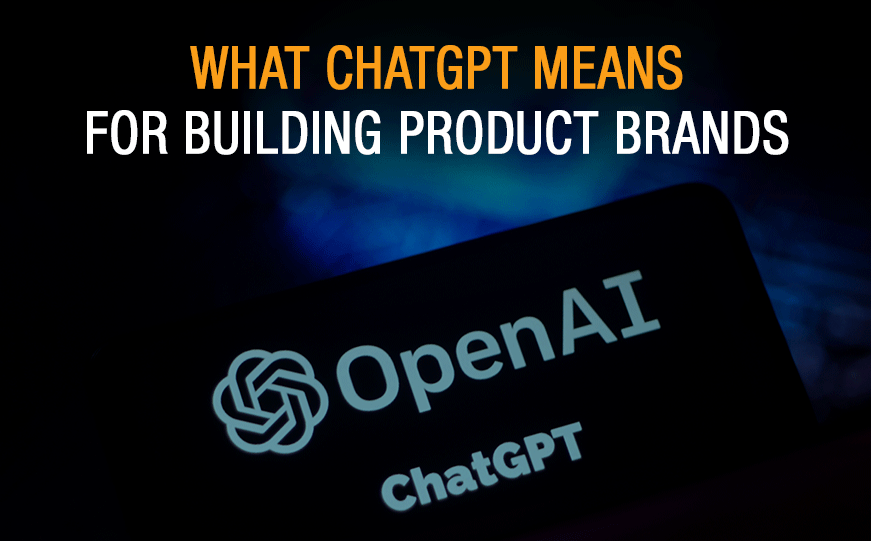By now, just about everybody’s heard about ChatGPT. If you haven’t, ChatGPT (Chat Generative Pre-trained Transformer) is an artificial intelligence developed by OpenAI and launched in November 2022. It’s not the first technology of its kind… but it is the first to be so accessible. Will this mark the end of journalism? Alter education forever? Reduce Google Ad Word spends?
We believe that it’s not the end of anything. Instead, our team is convinced that ChatGPT is the beginning of a significant evolution.
To prove a point, we asked the application itself, “What is ChatGPT?” And it responded… in mere seconds:
I am ChatGPT, a large language model developed by OpenAI. I am designed to generate human-like responses to text-based conversations. I have been trained on a massive amount of text data from various sources, including books, articles, and websites, using advanced machine learning techniques, such as deep learning and neural networks. As a result, I can understand and respond to a wide range of topics and questions in a natural language, making me a useful tool for many applications, including customer service, language translation, and personal assistance.
Part Delphic Oracle and part search engine, this chatbot answers questions… and writes surprisingly well. The engagement feels it’s like generating responses from a human operator. Instead of a very complex, computer program.
Yes, it seems to understand marketing. And building products. Like how to write an elevator pitch. Or the closing paragraph of a blog post. Our team’s repeated attempts to stump the “path forward” have routinely fallen short… even for our global clients, in languages other than English.
Of course, in the current form, it’s a bit of a parlor game. Fun to spend time with. Surprisingly so. Particularly rewarding in our brainstorming sessions… and helping to define topics.
What it CAN’T do, is think independently. After all, ChatGPT takes what it has learned from the vast and very cumbersome internet.
It’s not a conversation. Instead, it’s more like the results of a web search — now delivered — in a narrative form.
Like Any New Tool
ChatGPT is not so different than the automated tool that Amazon uses for customer service — or Siri on your phone — and any number of chatbots or AIs used by businesses already. These forms of artificial intelligence are called “generative AIs”. Aptly named, because they generate natural language based on the information they’ve been programmed to know.
In the first five days of its release, more than a million users logged into the platform to experience it for themselves. OpenAI’s servers can barely keep up with today’s demand. And the site regularly flashes a message that users need to “return later” when capacity frees up.
Products like ChatGPT and GitHub Copilot, are taking technology in directions once thought to be reserved only for human beings. With generative AI, computers now can arguably exhibit creativity. Produce original content in response to queries. Draw from data they’ve ingested. And leverage past interactions with users.
They can develop blog posts. Sketch package designs. Write computer code. Even suggest reasons for an error.
This latest class of generative AI systems emerged from foundation models – large-scale, deep learning exercises trained on massive and unstructured data sets – that cover a myriad of topics. In fact, the foundation model underlying ChatGPT helped scientists create novel protein sequences. Those earlier experiences are built into the current ChatGPT and made accessible to everyone – even people with no technical background.
Business Uses Abound
AI is here to grow. And it has practical applications for Building Product Brands:
Marketing and sales – writing marketing, social media and technical sales content.
Customer service – answering “frequently-asked” questions. Tracking orders. And analyzing customer data.
Operations – generating task lists… particularly relevant for increasing productivity with remote work.
IT – writing, documenting and reviewing code. And developing best practice standards.
Risk assessment – answering complex questions and pulling from vast amounts of legal documentation.
R&D – accelerating discovery through better understanding of complex subjects like chemistry, biology and physics… used for creating greener and more sustainable building product solutions.
Practical and Ethical Issues
Like people, generative AI can be wrong. And unless the person who asked the original question knows that ChatGPT’s answer is incorrect… well, you understand the challenge.
Filters can’t catch inappropriate content. So, proceed with caution to avoid risking hard-fought good will and brand equity.
Systemic biases still need to be addressed. This type of application draws from massive amounts of data… that might include unwanted biases.
Norms and values aren’t reflected. Building Product Brands will need to adapt the technology to incorporate and align their culture and values.
Intellectual-property questions are yet to be answered. When a generative AI model brings forward a new product design or idea based on a user prompt, who can lay claim to it? What happens when it plagiarizes a source?
Before Going All In
For Building Product Brands considering generative AI, it’s important to identify the parts of the business where technology could have the most immediate impact:
- Where might the technology aid — or disrupt — industry and/or channel opportunities?
- What are our policies? Should that posture vary, across different departments?
- Given the limitations of the current crop of generative AI tools, in what cases should we move ahead?
- What legal and community standards should these models adhere to?
It’s important to remain aware of risks and limitations existing during the early stage of this — and other — technology developments. If you’re interested in learning more about how to harness the power of new systems-and-processes to leverage in marketing a Building Product Brand, send an e-mail to Steve at sk@kleberandassociates.com to get the conversation started.




